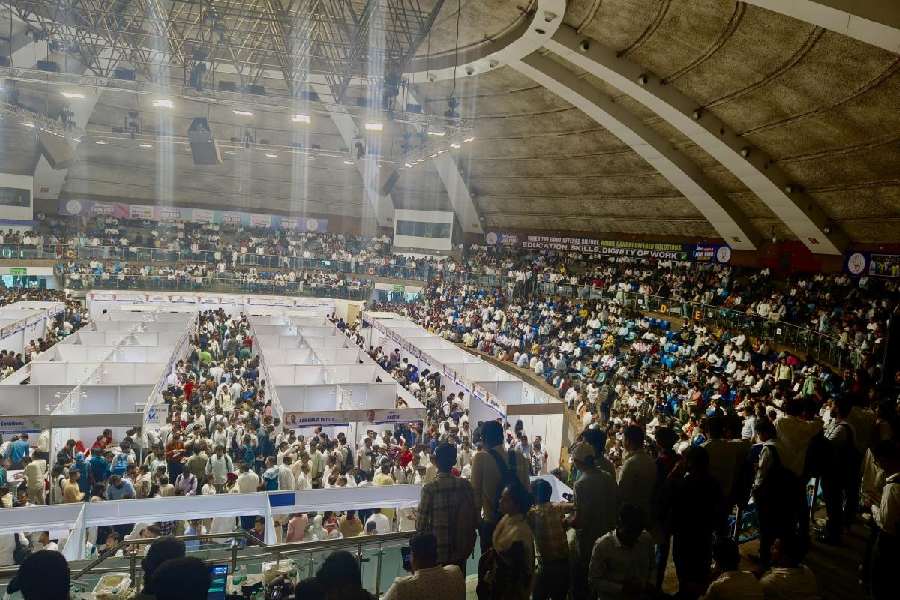 |
| Employees of multinational companies evacuate their offices in Gurgaon after ground vibrations were felt on Tuesday. (PTI) |
New Delhi, April 16: The ground vibrations felt in northern India after the 7.8-magnitude earthquake in southeastern Iran should be a portent of the havoc a closer trembler with similar intensity might cause along the Indo-Gangetic plain, geologists said.
The scientists said the depth of the Iran earthquake and the soft sediments lying on top of bedrock across vast swathes of northern India are factors that would have influenced the ground motion experienced locally.
“In soft sediments, the amplitude of the (earthquake) waves increases, and the waves reverberate between the top and bottom of the sediments,” said Shyam Sunder Rai, a senior scientist at the National Geophysical Research Institute (NGRI), Hyderabad. “This leads to high levels of ground vibrations, even if the epicentre is at a great distance.”
The earthquake, with an epicentre about 200km southeast of Zahedan and 167km northeast of Iranshahr, seems to be the result of a normal tectonic process in which the Arabian plate goes beneath the Eurasian plate at the Makran coast in Iran and Pakistan, the US Geological Survey said.
“This is among the biggest earthquakes that we would expect in this area,” Morteza Talebian, head of the seismotectonic division of the Geological Survey of Iran told The Telegraph on phone. “It had a depth of about 80 to 90km, the deeper the earthquake the wider the area where ground motion would be felt,” Talebian added.
Residents of Ahmedabad, Amritsar, Chandigarh, Delhi, and Sikar (Rajasthan) were among people from several countries in the region who reported ground motion to the US Geological Survey through its interactive website.
The ground motion in northern India from the earthquake in Iran should be an advance warning about the “really terrifying” accelerations we could experience should such an earthquake occur in the Himalayan region, the NGRI’s Rai told this newspaper.
Seismologists have long known that ground shaking is typically stronger at sites with soft sediments and the thicker the sediments, the greater the amount of shaking. In the past, several research groups in India have tried to study how earthquakes are likely to impact ground accelerations along the Indo-Gangetic plain.
A study by a team of scientists from the NGRI and the India Meteorological Department’s seismology division two years ago had indicated that about 100km from the epicentre, the effect of soft sediments would amplify the peak ground acceleration by a factor of two to four, and peak ground velocity by a factor of six to 12.
But the researchers cautioned that their calculations may not be valid for intense motions during large earthquakes.










